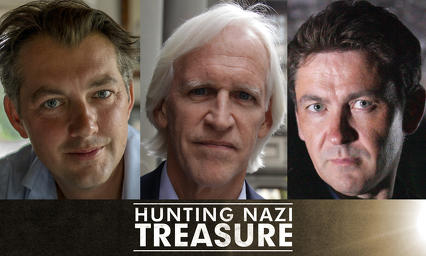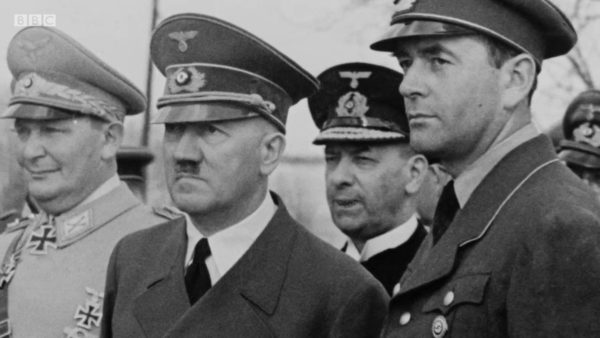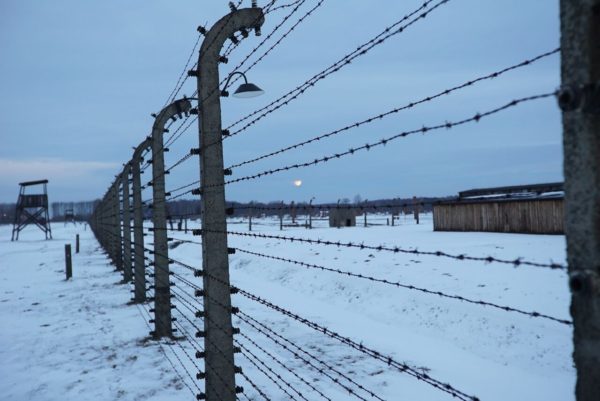Nazi Germany, in the greatest theft in modern history, plundered Europe of priceless paintings, drawings, etchings, tapestries, sculptures, rare books and priceless furniture. The collections of Jews, in particular, were targeted.
To this day, hundreds of thousands of stolen pieces remain unaccounted for. Where they might be could be anyone’s guess.
Hunting Nazi Treasures, an eight-part series that premiers on October 24 on the History channel, examines this conundrum. Judging by the first three episodes — which unfold in diverse locales ranging from Amsterdam and Berlin to Dallas and Zurich — these documentaries by Canada’s Saloon Media are well worth watching.

The three treasure hunters who try to unravel the mystery are Robert Edsel, the head of the Monuments Men Foundation for the Preservation of Art; James Holland, an art historian, and Conor Woodman, an investigative journalist. Holland and Woodman roam far and wide to examine cold files, uncover new clues and track down promising leads. They’re measured individuals, but at times their enthusiasm runs wild, and the result is sensationalist.
The first episode, Hitler’s Obsession, starts with Adolf Hitler, who hungered to be an artist. Once in power, his dream was to build the world’s finest art museum. It would be located in Linz, Austria, and would be filled with looted paintings and drawings. It was never built, but Hitler’s voracious hirelings ransacked the European continent to fulfill his ambition. Among them was the German art dealer Hildebrand Gurlitt, whose son inherited the cache.
Toward the end of the war, the Nazis shipped a good part of their booty to a salt mine in Austria for safekeeping. It was discovered by a special unit of the American army in the spring of 1945, but the the Americans did not find everything. Or so Edsel, Woodman and Holland think.
The investigators then turn their attention to scenic Lake Odensee in Austria, where, it’s believed, the Nazis dumped 60 wooden crates. No one knows what may be inside, but Woodman dives into its murky depths to test the waters.

Holland travels to Berchtesgaden, in southern Germany, to visit the Eagle’s Nest, Hitler’s country cottage in the breathtakingly beautiful Bavarian Alps. On one of its walls was a 16th century Flemish tapestry that had been seized from the Bornheimers, a German Jewish family. After the war, an American army officer stole it and brought it back home. Holland discovers it and participates in a ceremony during which it is donated to a museum.
The second episode, Goring’s Greed, turns on Hermann Goring, one of Hitler’s chief lieutenants. An avid art collector since his thirties, he set up one of the biggest looting operations of the war, instructing his personal art dealer, Alois Miedl, to scour the continent for valuable art works.

Goring extorted paintings from the Nathan Katz gallery in Amsterdam in exchange for exit visas that enabled Katz and his imperilled Jewish family to escape to neutral Switzerland. He also grabbed more than one thousand paintings from another Dutch Jew, Jacques Goudstikker. Up to 800 of these pieces are still missing.
The center of Goring’s looting operation was in Carin Hall, a mansion near Berlin he owned. At the end of the war, he sent his collection to southern Germany, where it was found by the U.S. army. Woodman, in an intrepid but melodramatic attempt to find more of the paintings, crawls into a small hole amid the ruins of Carin Hall. It leads into a maze of tunnels. A viewer wonders whether he’ll stumble upon anything of note.
The third episode, Nazi Gold, looks at another facet of Germany’s wartime crimes.

The Nazis plundered more than $20 billion worth of gold and used it to finance the war effort. They stashed their booty in Berlin and the Bavarian Alps. Much it was was found after the war in the Merkers salt mine by the United States and its allies, but about half a ton had disappeared.
Apart from looting gold bullion from the vaults of banks in German-occupied Europe, the Nazis extracted about 2.5 million tons worth of gold, in the form of jewelry and coins, from Jewish inmates in Auschwitz-Birkenau and other extermination camps, we’re told.

Melted down, this gold was shipped to neutral countries like Switzerland and Portugal and sold on the open market.
Woodman and two German colleagues search for the missing gold in an open field in Germany, but find only old bullets and a twisted anti-tank firing tube. Woodman speculates that this gold may have been deposited in the vaults of Swiss banks.
It’s a tantalizing thought.
